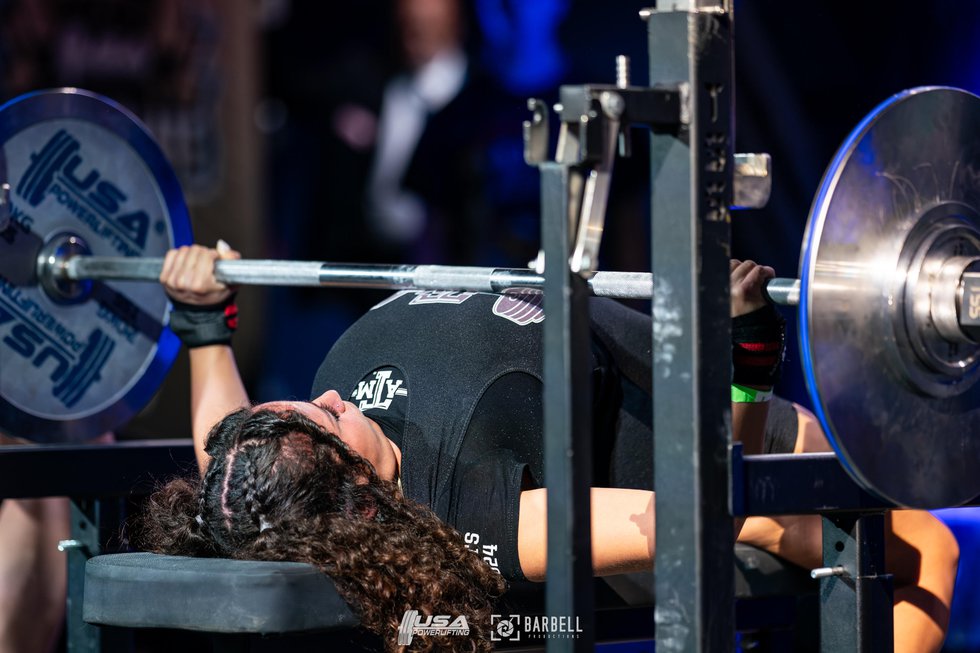Nutrition is a cornerstone of health and wellness that often goes overlooked by modern diet and fitness culture. For Brazos Valley residents who are looking to become the best version of themselves and learn the ins and outs of balanced nutrition and macronutrients, these three experts are sure to provide some valuable tips and tricks.
Basic Balance Nutrition — Brandi Bonin
Brandi Bonin started Basic Balance Nutrition after becoming disillusioned with the way hospitals were handling outpatient processes. Instead, she turned to herself to create a viable option for others in a similar situation by creating an insurance-based nutrition and wellness private practice that could serve patients above and beyond the bare minimum of nutritional education with personalized service.
What does the beginning of nutrition education look like?
“We actually start with just our balancing method — we get clients familiar with what carbohydrates are, what proteins are, what fats are and then what non-starchy veggies are.
Non-starchy veggies are not a macronutrient, they’re technically a type of carbohydrate, but because they’re digested differently, we have them in a different category. So, we start there with clients. First, understanding what goes where, what is balancing, why we need to balance, what are the benefits [of balanced nutrition] and then not just balancing each meal but also balancing the timing [of when we eat] and the consistency [of what] we’re eating throughout the day.”
Is meal prepping a good way of making a balanced diet?
“For some clients, yes, meal planning and meal prepping is a goal that works really well for those who work. On Sundays, they’ll meal prep for throughout the week. But some clients, maybe they don’t like leftovers, maybe they don’t want to cook all the food on Sunday, they might meal prep sporadically throughout the week. It just depends on the client.
“So, I feel like yes and no. Our big thing at Basic Balance Nutrition is meeting the client where they’re at — so if meal prepping doesn’t work well, let’s figure out what works better. If meal prepping does work, let’s create a meal plan together.”
How does Basic Balance Nutrition incorporate macronutrient goals into their nutrition plans?
“In the beginning, we really don’t give [macronutrient] numbers. Now later in sessions, maybe six to eight, if it’s appropriate for the client — if the client wants to have those numbers — we’ll calculate the macros for them. It just depends on which route we go. When we give macronutrient goals, we don’t say you need to eat this or less, we say you need to eat this or more. So, it’s never restrictive, it’s more about adding on and meeting those goals again, or more.”
How does balanced nutrition help with cravings?
“We get the clients to actually start eating more in a balanced way and consistently throughout the day. We don’t focus on ‘Oh, don’t eat that.’ We focus on ‘let’s eat more.’ What ends up happening is those cravings resolve themselves. A lot of times whenever we see people have cravings, very significant or overpowering cravings, it’s because they’re not eating enough. Maybe they’re not eating enough at meals, or maybe they’re going too long between their meals and snacks.”
Basic Balance Nutrition is open Monday through Friday from 8 a.m. to 5 p.m. Visit basicbalancenutritioncounseling.com, call (936) 337-3223, or email office@basicbalancenutritioncounseling.com to learn more about the services offered and start your wellness journey.
Victorem Performance Nutrition — Jena Brown
For 15 years, Victorem Performance Nutrition has been partnering with athletes across all levels of sport to optimize health and performance. From runners to bull riders, Jena Brown has provided nutrition and meal plans for a wide variety of athletes and active individuals.
What is non-restrictive eating?
“Eating is not intuitive for many people. So, I spend a lot of time teaching people how to eat in a way that regulates blood sugar control, including my athletes. When we know how to pair foods together and keep our blood sugar regulated, then we’re able to eat really without restriction. We don’t look at a [particular] food and say ‘I can’t have that today’ or ‘Today’s not a cheat day.’ Cheat day is no longer part of the language around eating. So, non-restrictive eating would be eating with less emotion attached and more intention or purpose. I teach athletes and active individuals how to build meals and snacks so that there’s less emotion connected to specific foods. This makes food selection easier when it’s based on function rather than emotion.”
How do athletes’ nutrition requirements vary from the average person?
“Everyone needs [high-quality] protein, carbohydrates, and fat. The difference is that athletes need more than the average person. Also, the type, timing, and amount of food around activity may need to be more dialed in for athlete performance. The type and amount of carbohydrates depend on the sport or activity. The more physically active you are, the more carbohydrates you need, and often, more simple carbohydrates may be needed to fuel the additional physical activity. Protein can come from plant sources or animal sources, depending on your individual preferences. Fat is essential for health and performance. Fat can help reduce inflammation, regulate hormones, absorb essential vitamins, and more.”
How do you use macronutrient goals when building athlete nutrition plans?
“Whenever I’m building meal plans, I always start with estimating calorie and protein needs. From there, I adjust carbohydrates, depending on their physical activity level, age and health. Then, we fill it in with fat. Sports dietitians do not make macronutrient recommendations using percentages of total calories. Instead, we estimate needs based on body weight, activity level and goals. Then, I’ll translate recommendations into something like, ‘Aim for 35 to 45 grams of protein per meal’. If I provide a percentage, it’s difficult to understand what that looks like when eating actual food, especially when looking for food options at a convenience store or restaurant. I teach clients how to read food labels. Knowing your nutrition targets in numbers can be helpful, especially if you have a restrictive mindset and tend to undertreat with the thought process that you ‘should eat less’. My clients are often surprised with how much food they should eat.”
What happens if someone isn’t meeting their body’s nutrient needs?
“If you are not meeting your nutrient needs, you do not have enough ‘money to pay your bills.’ This is called low energy availability. Your body’s physiological needs, activities of daily living, and training all ‘cost money’ to operate as calories and nutrients. If you do not have enough energy available to ‘pay your bills’, then you are at risk for low bone density which may lead to stress fractures, osteopenia or osteoporosis. You are also at risk for loss of lean muscle mass, sleep disruption, crankiness and irritability, reduced endurance, injury and disrupted hormones. Females who lose their regular menstrual cycle is a sign of low energy availability. All these are signs that you may not be getting enough calories or proper nutrition.”
Victorem Performance Nutrition is available by appointment only. Call (979) 213-7308 or visit victorem.com to learn more about the services they offer and start your wellness journey.
Texas A&M Powerlifting Club — Anamarie Rodriguez
One day when visiting the Rec at Texas A&M University, Anamarie Rodriguez saw a member of the Texas A&M Powerlifting Club working out, sparking her interest in the sport. Since joining the team last December, biology junior Anamarie has been able to attend multiple competitions, including the USA Powerlifting Collegiate National Championship.
Why did you start tracking your macros and setting macronutrient goals?
“Before I was tracking anything, I pretty much just ate whatever I wanted. However, I realized that my performance wasn’t consistent. Tracking calories can sometimes be very inconvenient and annoying, but it has allowed me to control more of my variables. So, I know the type of foods I’m eating and how my practices go, so when competition time comes my variables are consistent and I’ll know because I’ve been doing the same things. Whereas before, if I had a slice of cake one day, I would be super energized the next day, but then let’s say I had just a granola bar before working out the next day, my energy would be super low. So, keeping my diet consistent and tracking it throughout the day has really helped develop me as an athlete. I guess you could say that my performance goals are more easily met.”
How do you track your macronutrient goals?
“I use a friendly user app called My Fitness Pal — it has quite literally almost every single food you can think of including restaurant foods. It makes it pretty easy. So, we set my goal, which right now is about 1400 calories, and we split that up into percentages between carbs, fat and protein and then every day I enter what I have for breakfast, lunch and dinner. Even if I have a snack, I enter it every single day and it tracks it.”
What was it like when you first started tracking your macros?
“It was very hard mentally at first. [I even was] keeping track of everything on the days where I didn’t need to and I was able to free eat. My calorie count was always in the back of my mind. I would think, ‘Oh my gosh, I’m eating so much like I’m not tracking this.’ So, it has been kind of hard and challenging mentally to be able to allow myself to eat what I want because food is fuel ultimately. But overall, I’d say it’s been pretty beneficial.
“I think since I got used to it and got into the swing of things, it hasn’t been as challenging. I kind of enjoy it just because now I’m able to just look at things like, ‘Oh, that has so much protein it’ll help me so much.’ Now, I can just cook meals that have everything I need off the top of my head instead of looking at recipes. It’s kind of fun that way. The way that it’s made it more efficient for me to understand what I’m doing. I will say the hardest thing mentally was getting past the fact that I was eating so much less and the fact that it does become kind of obsessive when you start tracking everything every day. But otherwise, I feel pretty good. I feel healthier now, which has helped my mental health a lot because when I feel healthy I feel like I’m doing better, even when I’m just studying and in my daily life.”
What advice would you give to someone trying to better themselves by lifting?
“I would say just get yourself to go to the gym. Even if you’re just going to the gym and then leaving, the fact that you got yourself there and were able to sit in the parking lot for a few minutes is important because that’s the first step. Just get there. A lot of people want to start but they can never get themselves to go. So, even if you’re just walking on the treadmill or something, just go and keep it consistent. Try to go as much as you can. Work around your work schedule, if you can only go two days a week, so be it, you can work up to more. Just get into the gym.
“Start taking some protein if you want to build muscle. You’re not really going to see results without it. But other than that, just staying consistent. Consistency is the most important thing.
“If you are trying to go beyond just lifting weights to be healthy, I would recommend seeking professional help from either a coach or a trainer, any type of physical trainer. I recommend getting that because it’s hard to take care of your nutrition and programming in the beginning when you’re not exactly sure what to do because you won’t see progress immediately. I would always recommend getting a trainer first — that would be my first step towards getting to the highest level. Also, just read about lifting and growing muscle. If you want to gain weight because you want more muscle mass, you need to find out how much you should be eating and how you should be lifting. So, read and get a trainer.”
Follow @ana.rod924 on Instagram to support Anamarie or reach out to @aggiepowerlifting on Instagram to learn more about the sport.




